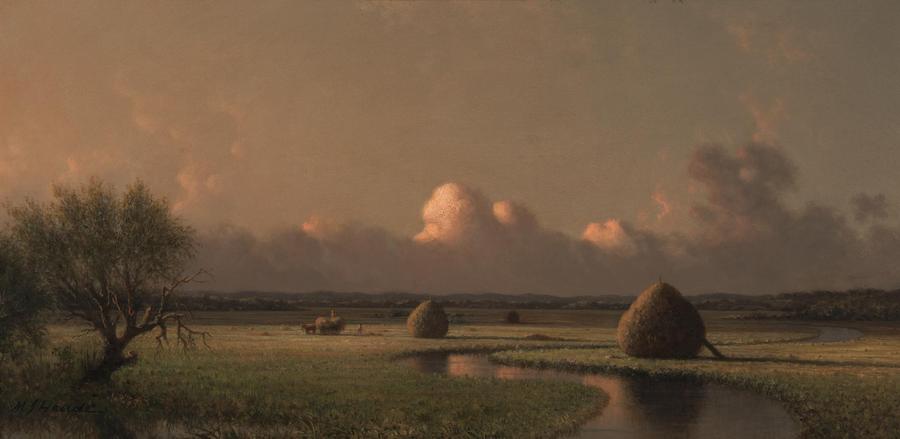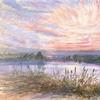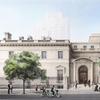Massachusetts Modernist and Marsh-Themed Works Form 2 New Exhibitions at Cape Ann Museum
- February 20, 2022 11:22

Stretching across 25,000 acres of vast salt marsh, barrier beaches, and tidal rivers on Massachusetts’ North Shore is the Great Marsh, a natural wonder that has captivated many artists over the years. Window on the Marsh is a new exhibition at the Cape Ann Museum that features two works of the marsh by each of the renowned painters Martin Johnson Heade and Fitz Henry Lane is accompanied by four photographs by the turn of the century artist, Martha Hale Harvey. The show opens March 19 and runs through Sept. 27, 2022.

Although working over a century ago in different mediums, the three featured artists captured the innate beauty of the Great Marsh in black and white photography and luminescent paintings. Thanks to the generosity of a private lender, the Cape Ann Museum is able to feature two of Heade’s works in Window on the Marsh on view in the special projects display area within the Museum’s permanent Lane Gallery.
“Bringing together differing responses to this singularly inspiring place is something we love to do at the Museum. This exhibition and juxtaposition of works in different media provides visitors with the opportunity to explore this landscape from the perspectives of a talented and underrecognized photographer as well as from two exceptional painters,” said Cape Ann Museum Director Oliver Barker. “Window on the Marsh also invites the exploration of that inescapable intersection of environment and art on Cape Ann.”

For nearly 45 years, Heade (1819-1904), one of America’s most prolific and well-known painters in the 19th century, focused his artistic talents on capturing the Great Marsh’s distinct beauty. Two paintings from that series, Sunny Day on the Marsh (Newburyport Meadows) (c. 1871-75) and Sunset on the Marshes (1867), both on loan from a private collector, will be on display for the exhibition, showcasing Heade’s ability to capture the changing light of a day and amid storms off the Atlantic Ocean.

Fitz Henry Lane (1804-1865) is known as a marine painter, but two of his most successful works are marsh views on Cape Ann: Babson and Ellery Houses, Gloucester, and The Babson Meadows of Riverdale, both done in 1863. For generations, the Babson homestead in Gloucester was one of a handful of saltwater farms on Cape Ann, and the paintings showcase Lane’s exceptional skill at painting seascapes as well as landscapes. These two paintings will also be part of the exhibit.
Martha Hale Harvey (1863-1949) was one of Cape Ann’s earliest and accomplished female photographers. She worked with plate glass negatives, making images of people, Gloucester’s working waterfront, and coastal areas around her home in Annisquam, and most notably of the Great Marsh.

Working with Harvey’s original 4x5” glass plate negatives of marshes along the Annisquam River and at Wingaersheek Beach, contemporary award-winning photographer Anne Rearick created prints of Harvey’s work in her darkroom. Based in Gloucester, Rearick is a professional photographer and teacher who is also Guggenheim fellowship recipient. Four of Harvey’s photographs as reproduced by Rearick will be part of the Window on the Marsh exhibit.
On March 19 at 1 p.m., the Museum is planning a special program, The Cultural and Environmental Significance of the Great Marsh, with a panel discussion about the importance of the Great Marsh with Patricia Hanlon, author of Swimming to the Top of the Tide, Kim Radochia, creator of Heart in the Haystack show last year by the Museum at its Cape Ann Museum Green campus, and Dr. Danielle Perry, Coastal Resilience Program Director for Mass Audubon. To sign up, visit the museum website.
“An historically and ecologically important resource, the Great Marsh was traditionally used for salt marsh haying, beach plum and cranberry harvesting, fishing and clamming,” said the Museum’s Curator Martha Oaks who organized the show. “In addition to these very practical uses, the Great Marsh has also served as inspiration for generations of artists.”

Cape Ann Modern is a special exhibition drawn from Cape Ann Museum’s permanent collection and spotlights the works of modernist artists who found inspiration in the region during the mid-20th century, on view from Feb. 26 to April 6, 2022. Included are works by more than 22 artists including Zygmund Jankowski, Sam Feinstein, Elaine Wing, and George Aarons. Recent acquisitions on view will include works by Thorpe Feidt, Celia Eldridge, and Vivian Berman.
Artists working on Cape Ann during the mid-20th century, who experimented with abstract styles and explored fresh subject matter, broke new ground with their work. The “modernists,” as the late Boston art critic Dorothy Adlow called them, moved boldly away from the established forms of art associated with the area, leaving behind the traditional land and seascapes created by Cape Ann School painters and the figurative sculptures modeled by artists who followed in the footsteps of Charles Grafly.
Academic painters like Emile Gruppé, Aldro Hibbard, and Margaret Fitzhugh Browne continued to create and exhibit their work. “Increasingly, however, they were joined by a more edgy progressive group of men and women who worked in a range of mediums, exhibited their work wherever they could and in doing so succeeded in engaging new and diverse audiences,” said Cape Ann Museum Curator Martha Oaks who organized the show.
On exhibit will be works by the modernists who found inspiration here on Cape Ann, dating from the mid-1930s through the 1990s and a critical mass from the 1950s. Among them are: Roger Martin (1925-2015), Dehirsh Margules (1899-1965), Tom O’Hara (1920-1981), Vivian Berman (1926-2016), Bernard Chaet (1924-2012), Sam Feinstein (1915-2003), Alfred Levitt (1894-2000), Elaine Wing (b. 1931), Jan Matulka (1890-1972), Robert Anderson (1934-2016), Thorpe Feidt (b. 1940), Celia Eldridge, Zygmund Jankowski (1925-2009), Albert Alcalay (1917-2008), and George Aarons (1896-1980).
“Cape Ann has been an internationally significant destination for artists, sculptors, poets, and writers to work for well over a century,” said Cape Ann Museum Director Oliver Barker. “The Museum is dedicated to celebrating the local artists who continue to produce compelling, inspiring works of art spurred by Cape Ann as a place to this day. And, as we plan to mark the 150th anniversary of the Museum’s founding in 2025, we are looking to strategically expand our collection, particularly with artwork from the mid-20th century.”















5100x100_c.jpg)




